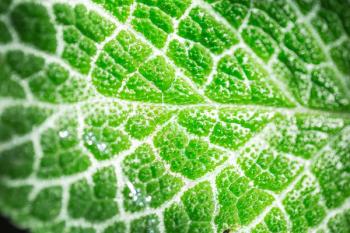
Best of the Week: Intermolecular Interactions, Illegal Ivory Trade, Breaking Down Fentanyl
Spectroscopy published stories on Raman, infrared spectroscopy, UV-vis, and more. Here are the top reads from the week.
This week, Spectroscopy published a variety of articles on the hottest topics in analytical spectroscopy and beyond, covering a wide range of spectroscopic techniques and how they are being applied in various application areas. Below, we’ve highlighted some of the most popular articles, according to our readers and subscribers. Happy reading!
Researchers collaborating from Peking University in China, Kwansei Gakuin University in Japan, and the University of Delaware in the United States have developed a new approach to analyzing intermolecular interactions using two-dimensional correlation spectroscopy (2D-COS). This method could lead to a deeper understanding of complex chemical processes and open doors to new discoveries in supramolecular chemistry.
The illegal ivory trade has been primarily responsible for the dramatic depletion of endangered elephant populations in Africa and Asia. In this study, researchers from the University of Bristol shows how Raman spectroscopy can be used to distinguish between ivory belonging to elephants or mammoths. The illegal ivory trade has been primarily responsible for the dramatic depletion of endangered elephant populations in Africa and Asia. This study, led by Rebecca F. Shepherd from the University of Bristol, examined how Raman spectroscopy can help in species identification of ivory.
Scientists from Florida International University and Escola Universitària Salesiana de Sarrià Passeig are working on a novel approach to differentiate the structure of fentanyl analogues by using SERS as a technique to analyze fentanyl analogues. This approach uses Raman spectroscopy with colloidal metal nanoparticles, allowing for highly sensitive spectroscopic readings. Two-dimensional correlation spectroscopy (2D-COS) is gaining traction among chemists for its ability to examine intermolecular interactions in complex systems. However, analyzing these interactions can be challenging due to overlapping spectral peaks.
The first quarter of 2024 also brought about some newly developed content projects at Spectroscopy. These new projects are designed to present the technical information our audience craves in a more digestible and readable format.
Over the past quarter, we have expanded our interview coverage by reaching out to different subject matter experts (SMEs) in the field. Our goal in doing so was to cover a wider breadth of topics for our audience, as well as shine a light on the ongoing research happening in spectroscopy and related applications.
Dark tea, particularly Pu-erh ripe tea, is renowned for its rich content of theabrownins, yet industrial production of these compounds has remained an ongoing challenge. A recent study examined the ultraviolet-visible (UV-vis) and infrared (IR) spectra of theabrownins in dark tea, revealing more about the theoretical foundation for the industrial-scale production of theabrownins.
References
(1) Workman, Jr. J. Unlocking Supramolecular Chemistry: A New 2D-COS Approach to Intermolecular Interactions. Spectroscopy. Available at:
(2) Wetzel, W. Using Raman Spectroscopy to Distinguish Elephant and Mammoth Ivory. Spectroscopy. Available at:
(3) Workman, Jr. J. Breaking Down Fentanyl: New Technique Offers Promising Results in Differentiating Analogues. Spectroscopy. Available at:
(4) Wetzel, W. Spectroscopy Spotlight: Highlighting Interviews from the Past Quarter. Spectroscopy. Available at:
(5) Wetzel, W. Characterizing Theabrownins in Dark Tea Using Ultraviolet-Visible and Infrared Spectroscopy. Spectroscopy. Available at:
Newsletter
Get essential updates on the latest spectroscopy technologies, regulatory standards, and best practices—subscribe today to Spectroscopy.





